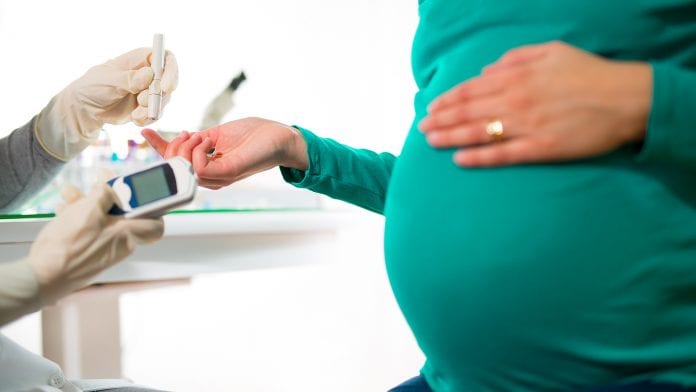
A mother’s gestational diabetes is linked to an increased risk of foetal hypoxia and further complications following birth, new research has found.
Foetal hypoxia is a lack of oxygen in the foetus, which is caused by excessive growth of the foetus. Researchers from the University of Helsinki and Helsinki University Hospital demonstrated that gestational diabetes is an independent factor that increases the likelihood of foetal hypoxia during labour.
The study has been published in the Acta Diabetologica.
Hypoxia has short-term and long-term effects to the foetus and newborn infant, and can lead to brain damage and even death of the foetus. The research findings showed that gestational diabetes increased the susceptibility of the foetus to intraportal hypoxia, regardless of the size of the foetus. Researchers also determined that the risk of needing to perform resuscitation on the newborn was ten-fold.
Researcher Mikko Tarvonen commented: “The risk of hypoxia and the resulting risk of poor condition in newborn infants was nearly seven-fold in the foetuses of mothers with gestational diabetes, compared to the foetuses of non-diabetic mothers.
“Damage caused by hypoxia is a source of suffering for the child and their family. In addition, the cost of treating hypoxia-related injuries is extremely high for society.”
Monitoring the foetal heart rate to identify the risk of hypoxia
A lack of oxygen in the foetus can be identified by recording the foetal heart rate during labour. A zigzag pattern, meaning an increased variability of foetal heart rate, indicates the onset of hypoxia in both normal pregnancies and those complicated by gestational diabetes.
Cardiotocography (CTG), or the electronic monitoring of the foetal heart rate and uterine contractions, is a routine precautionary measure carried out during labour in all hospital deliveries in Finland. For the time being, gestational diabetes treated by diet has not been an indication for continuous CTG monitoring during labour.
“Based on our findings, intensified CTG monitoring during labour is well indicated during labour of women with gestational diabetes. This would enable the early detection of a zigzag pattern, ensuring the safety of the delivery and birth.
“The CTG monitoring somewhat reduces the ability of the mother to move during labour. On the basis of our findings, foetal monitoring could in the future be more clearly targeted to foetuses which would benefit from closer monitoring.
“The treatment and monitoring of gestational diabetes is a multiprofessional cooperation where the focus is on the mother, the foetus and the child. Hopefully, the new findings will increase the safety of deliveries – both in terms of preventing foetal hypoxia and enhancing the mother’s feelings of safety,” Tarvonen added.
Healthy living habits
Being overweight, insufficient physical activity and an unhealthy diet are significant risk factors associated with gestational diabetes. Prior research has shown that such risks can be considerably reduced during pregnancy by healthy living habits and maintaining a good blood glucose level.
“There are also women of normal weight among those with gestational diabetes, in whom an underlying genetic predisposition is likely. Still, they too benefit from being sufficiently physically active and having healthy living habits,” Tarvonen added.







